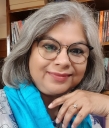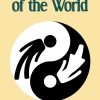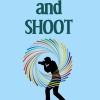
Vaibhavi Chandra, a reporter with the magazine, Shooting, interviews Shayan Basu, a passionate wildlife photographer.
Vaibhavi Chandra: Thank you, Shayan for giving us your time. Let me start by asking you when did you first become interested in photography?
Shayan Basu: My interest in photography developed when I took my first trip to Ranthambore National Reserve Forest in India. I had gone there with friends and did not have a proper camera or any necessary equipment to shoot the sights I saw. I was completely bowled over by the forest and the animal life around me. That experience changed me for life, and I began taking keen interest in wildlife photography since then.
VC: Do you shoot everything that catches your attention, or do you have a focused field of interest?
SB: I have a focused photography field which is wildlife. In today’s environment, with everyone connected through social media sites and apps, it is very critical in the world of photography to select your genre. Firstly, it helps to build your expertise in the chosen field and secondly, it connects you to a like-minded community of photographers. When your photographs are posted online a dedicated network of followers builds up. They are people who have a keen interest in your chosen genre.
VC: By profession you are a banker which means you spend a lot of your time in closed spaces such as your office. Was your focus on wildlife an opportunity to go out into open spaces?
SB: You may say so. Being in forests and close to wildlife helps to cut out the clutter of my busy workdays and I can feel peace and tranquillity outside and inside me. It gives me solitude and time to explore my inner self. Often I ponder on inconsequential things which actually turn out to be the basic essentials of life.
Most of the reserve forests I visit have poor connectivity, so I remain disconnected digitally. You would be surprised how that is viewed in the banking industry. For bankers, if people cannot connect with you, the person is jokingly referred to as ‘dead’! Funny, isn’t it…how much we are wired?
VC: Tell us about your wildlife conservation views.
SB: I was very moved by a report given out by WWF (World Wildlife Fund) that from 1970 to now, the humans have wiped out 60% of the animal population. This made me think. What if putting up photos in public spaces it becomes possible to build compassion towards wildlife? Could this become a means of getting more people to contribute to wildlife conservation? After all, wild animals and forests play an extremely significant role in maintaining the balance of Nature. Humans are actually the beneficiaries of that balance. Without wildlife and their habitats, how will human life survive? I felt very strongly that photography is the mode of taking that message to the world: Let us conserve whatever little of the wildlife this world and Nature still have….
VC: You have been to many wildlife sanctuaries, both in India and abroad. Do you find efforts at conservation are making a difference?
SB: What I discovered is that both in India and abroad there is a lot of effort made by governments to conserve and maintain wildlife sanctuaries. However, what entranced me most was the response of the people who live in close proximity to the forests and natural parks. The reality is they are the biggest contributors to the effort of conserving the environment. In Indian forests, even when the villagers living on the borders of the sanctuaries lose their cattle or loved ones to animal attacks, they never attack back. They have been the greatest supporters of conservation as they believe that the wild animals living in the forests are an essential part of nature and key to their survival.
VC: How do you think your photography takes the message of conservation to the people?
SB: I strongly believe that conservation of Nature cannot come about through government policies alone. We need to build a society that is compassionate towards the preservation of wildlife. We need to develop involvement of the common man, the world over, in conserving wild animals and their habitats which includes bringing about climate change. I have realised that people are unaware of the variety of wildlife this planet has and its beauty. Through my photographs, I want to spread this awareness and trigger actions to protect, preserve and conserve this great natural gift.
VC: Which wildlife sanctuaries have you conducted your shoots in? Which, out of them, did you find most conducive to preserving animal habitats?
SB: I have shot in many wildlife sanctuaries in India and abroad, such as Bandhavgarh in Madhya Pradesh, India. Ngorongoron valley, Tanzania and Masai Mara, Kenya. All of them are conducive to the animal habitats. All of them have kept human proliferation inside protected areas to the minimum. The authorities have strict regulations for visitors and ensure they are followed to the letter.
VC: How many safaris do you have to take on to get really unusual photographs of wild animals?
SB: Well, getting unusual or unique photographs always depends on luck! You may get the right click in the first five minutes of your safari, or you may have to wait till the cows come home….What you need is loads of patience! Come what may, at least six to seven safari trips to the same area are a must to understand the habitual behaviour of the animals and their haunts.
VC: Can I request you to respond in a sentence or a few words as your first reaction to the next questions?
SB: Sure !
VC: Forest?
SB: Beautiful and serene!
VC: Best sighting spots?
SB: No such places exist. Animals appear anywhere and anytime.
VC: Camera?
SB: A camera is only as good as the photographer.
VC: Inspiration?
SB: Steve Winters, NatGeo wild life photographer.
VC: Courage?
SB: Comes with experience.
VC: Opportunity?
SB: Don’t be shy. Take every opportunity or regret later.
VC: Now for some longer answer. While shooting animals, what are things that you cannot do without and why?
SB: First, my lens. I need a large zoom lens such as a100MM - 400MM, telephoto lens to shoot photos close up and sharp. Second is comfortable clothing as that’s the last thing you need to be bothered with on a safari, Third, is a pair of good sunglasses. If you have the sun in your eyes, you can miss some good shots. Finally, at least three bottles of drinking water. The heat and bouncing continuously in a jeep driving through rough terrain dries me out. Keeping the body hydrated helps me stay healthy for the next safari.
VC: Can you explain the link between photography and art?
SB: That’s a never-ending debate. The die-hard shooters believe photographs are art, while the naysayers maintain with the advent of digitized photography, photographs have ceased to be art.
To be fair, it is true that when clicking a shot, the DSLR camera can do a lot of auto imaging and focusing. After the actual clicking, the ability to use photoshop tools improves the quality of the image immensely.
However, I would also remind you that you can’t photoshop the moment! By that I mean a click at the right time, at a particular angle is what makes a winning shot. Only then can your photograph portray the exact sensation you want the world to see.
VC: Wildlife photography is an obsession with you. Have you ever considered taking it up as a career?
SB: Wildlife photography is a very expensive obsession. These days a good camera costs anything above a lakh of rupees and a good telephoto lens costs about the same. Also, there is other equipment which you need to purchase ranging from tripods, macro lens, lens covers and so on. To bag them safely in a rucksack you need to spend on an expensive bag. Not to mention the expenditure on travel, comfortable stays, park and safari fees. So affordability is one obstacle in making this pursuit a career. Possibly, once I am an established wild life photographer, I may choose to make it a career. Currently, wildlife photography, for me, is midway between an obsessive hobby and an established way of life.
VC: What advice would you give budding photographers?
SB: The first thing a budding photographer should do is to choose a genre !
Second is to spend a lot of time with your DSLR camera and lens. You should know your equipment as well as your best friend. In the wilderness your equipment will be your only companion, both of you searching for that perfect shot. Nobody else can help you get it. You have just a microsecond to take a decision…shoot or not to shoot! At that point, you need to know the capability of your equipment and use it to the best advantage.
Thirdly, always take good care of your equipment and never give up on your patience. Take each day with the thought that this is that one day which will gift you the perfect shot. A shot that will make you famous!
VC: Thank you, Shayan. I am sure the readers of Shooting will love your words. Please keep shooting and sharing your wonderful frames with our magazine.
About the Author







Comments